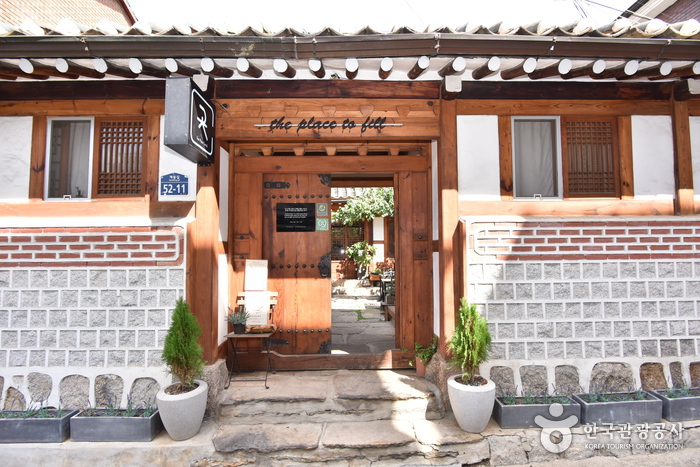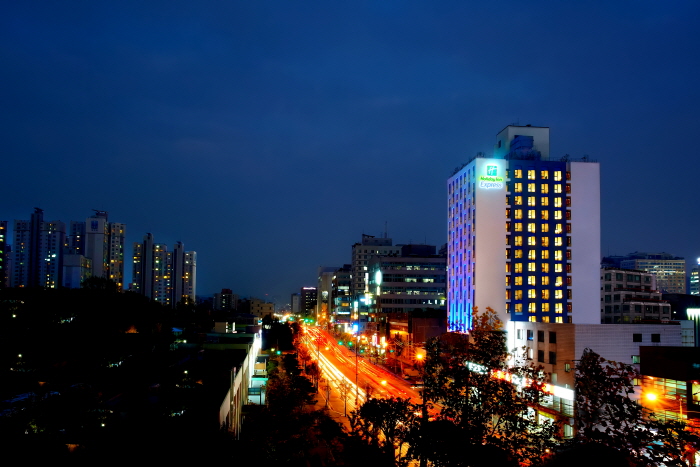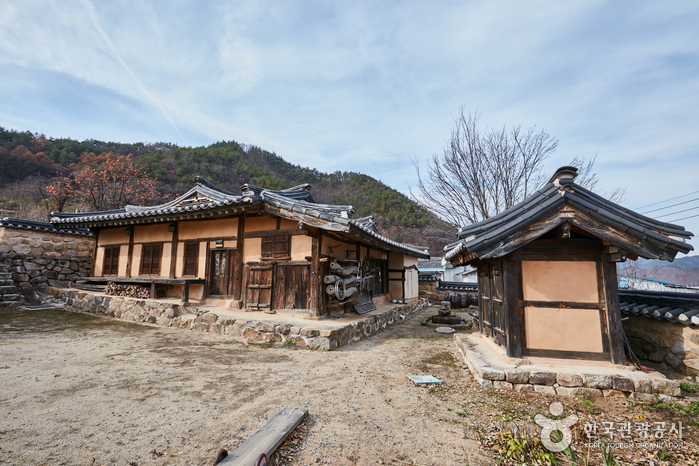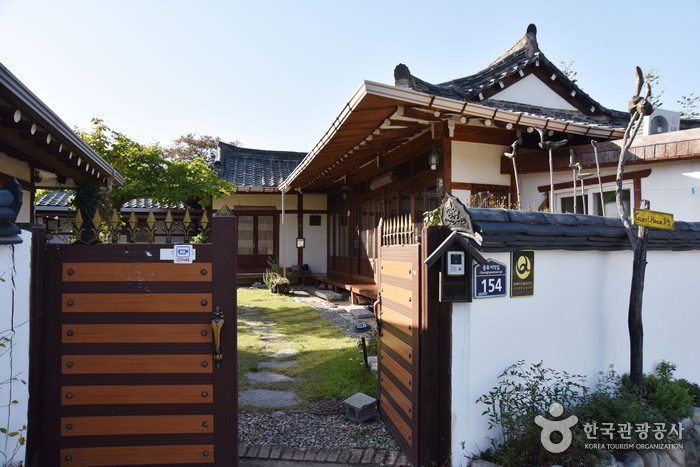Hillhouse Hotel / 힐하우스 호텔
2025-03-18
42, Sogong-ro 3-gil, Jung-gu, Seoul
+82-10-5207-0580
Hill House Hotel is a business hotel located at the foot of Mt. Namsan Park in Seoul. The hotel opened in 2006 with 40 rooms in all. There are various types of rooms including double room, twin room, deluxe twin room, and suite room. The hotel is earning raves for the neat and clean condition of its rooms. In particular, the hotel is ideal for travelers who prefer quiet accommodations since it is located in a residential area.
The room offers various amenities. Free Internet is available in all rooms, and a notebook PC is available for use at the communal space in the lobby. Complimentary breakfast of toast, coffee, cereal, etc. is offered. There is a communal microwave in the cafeteria, too. A baggage counter is also available for customers’ convenience.
The hotel offers easy access to public transportation, being located near Subway Hoehyeon Station, Seoul Station, and Myeongdong Station. You can visit Namsan Seoul Tower, Namdaemun Market, etc. on foot. Myeongdong is a mere 10-minute walk from Namdaemun Market. With large department stores and duty-free shops, Myeongdong is a hot place for foreign travelers. The hotel is also near Cheonggyecheon, so it is recommended to travelers who want to enjoy a tour of downtown Seoul.
The Place Seoul (traditional Korean-style guesthouse) (복합한옥공간 곳)
2025-06-02
52-11, Gyedong-gil, Jongno-gu, Seoul
The Place Seoul in Gye-dong, Jongno-gu, Seoul, is a meeting place of traditional and modern Korea. It has a yard with a beautiful 80 year-old dogwood tree, and a small garden in which guests can enjoy the passage of the seasons. The Place Seoul is an environment-friendly place which uses eco-friendly consumables such as toilet paper and shampoo. Breakfast is simple and healthy. There are many good cafes in nearby Bukchon, and local tourist attractions include the National Palace Museum of Korea and the National Museum of Modern and Contemporary Art.
Holiday Inn Express Suwon Ingye / 홀리데이 인 익스프레스 수원인계
2020-12-19
116, Ingye-ro, Paldal-gu, Suwon-si, Gyeonggi-do
+82-31-5177-0000
Holiday Inn Express Suwon Ingye is InterContinental Hotel Group's (IHG) first business hotel to open in Suwon, Gyeonggi-do. Located at the center of the city, Holiday Inn Express Suwon Ingye aims to offer convenient services to tourists traveling within areas of Seoul and Gyeonggi-do. A total of 249 double and twin bedrooms take up the 3rd to the 14th floor of the hotel, offering a great view of the city park. All rooms are equipped with an i-Pod docking station and offer free Wi-Fi connection. Not only does the hotel provide free breakfast for in-house guests, but it also has a Grab & Go Bar where guests can enjoy a light meal as well as freshly brewed coffee.
Juwangsan Mountain Seongcheondaek
2021-04-09
12, Seodang-gil Cheongsong-eup, Cheongsong-gun, Gyeongsangbuk-do
+82-10-6711-6427
Seongcheondaek House with about 300 years' history is an old hanok guesthouse located in Cheongun-ri at the entrance to Juwangsan Mountain, which can be reached by driving along Yongjeoncheon Stream from Cheongsong County in Gyeongsangbuk-do. With the tranquil surrounding atmosphere among houses in the alley, the house features a typical square-shaped structure of the mountain region.
Seongcheondaek House is presumed to have been bought by Im Chun-seop, a high-ranking official during the reign of King Gojong (r. 1863-1907) of the Joseon Dynasty, but its exact construction date is unknown. It was designated as National Folklore Cultural Heritage No. 172 in 1984.
This cozy hanok house consists of the main gate with straw-thatched roof, square-shaped Anchae (Women’s Quarters), middle gate, Sarangbang (master’s room), tea room, old stable, Daecheongmaru (hall between rooms) overlooking the courtyard with beautiful scenery, and so on. In particular, guests can enjoy a romantic atmosphere from Daecheongmaru by appreciating the scene of falling raindrops or melting snow from the edges of the eaves.
The Munganchae (gate building) consisting of a bathroom and a kitchen has a straw-thatched roof and a renovated interior for the guests’ convenience. The square-shaped Anchae is composed of two guestrooms (Sarangbang and Anbang) and a reading room (Utbang). The rooms feature a traditional construction style with cozy and clean interior items including a small wooden table as well as clean beddings. In addition, a kitchen is situated in front of Anbang, displaying traditional kitchen appliances including a fireplace and two large iron pots, unlike a modern-style kitchen in Munganchae. Daecheongmaru of Anchae offers an open view of the outdoor landscape through two large wooden windows. In addition, a deep groove in the middle of the yard in front of Daecheongmaru catches one’s eyes. The groove is said to have been made due to the rubbing of the foot on the ground when weaving hemp cloth hundreds of years ago.
Guests can enjoy relaxation both during daytime and nighttime under a starry sky in the yard where a small wooden bedstead and a stone table are situated. Moreover, the house provides folk games such as neolttwigi (Korean see-sawing game) and tuho (pitch-pot) as well as the family art therapy program wherein family members can understand each other better through a painting and drawing activity. Surrounding tourist attractions include Juwangsan National Park and Jusanji Reservoir.
Huewon (경주휴원)
2025-06-04
154, Chunghyoseoak-gil, Gyeongju-si, Gyeongsangbuk-do
Suncheonbay house of sea castle [Korea Quality] / 순천만해룡성고택 [한국관광 품질인증]
2023-04-13
136, Hongdu-gil, Suncheon-si, Jeollanam-do
+82-10-4205-1110
'Located in Hongnae-dong, Suncheon, Suncheonman Bay Haeryongseong Fortress Gotaek is the head house of the Suncheon Moon clan and has long been inhabited by the descendants of Moon Wi-se (pen-name: Poongam), who rendered distinguished services to the Joseon dynasty as a Righteous Army during the Japanese Invasion in 1592.
The house, with its long history of 300 years, was known as a wealthy and warm-hearted family house in the Suncheonman Bay area that used to provide a hearty meal for passers-by in the sarangbang (men’s quarters), and also produced three queens during the Goryeo Dynasty.
As the house is surrounded by low hills where various seasonal herbs including mugwort, water parsley, and other medicinal ingredients grow, it offers guests a wild tea ceremony experience. It also offers a pork belly BBQ with water parsley in the evenings. Guests can see animals like roosters and Jindo dogs. In particular, the ‘Seungjiwon room’ consists of a bedroom, living room, bathroom, and kitchen, making it popular among family groups.
Hanchaedang Korean traditional house [Korea Quality] / 한채당 체험한옥관 [한국관광 품질인증]
2021-04-05
695-9, Songui-ro, Sowon-myeon, Taean-gun, Chungcheongnam-do
+82-10-2629-0121
The Hanchaedang Hanok Stay Center consists of two hanok buildings with the same traditional structure, including a tiled-roof, maru (wooden floor), and gudeul (Korean floor heating system). The interiors offer a harmonious combination of modernity and the features of a traditional hanok house. Each room has a low table for four people, a central living room with en suite toilet and bidet, a main room (Anbang) with an en suite bathtub, toilet and bidet, another room (Geonneonbang), and a kitchen with a wine bar table. The main room has two sets of bedding for four people, while the other room has one set of bedding for two people. The extra bedding is always placed inside the wardrobe. Guests can cook in the kitchen, but they may only hold a BBQ outside. (There is a charge for the BBQ set.) The house overlooks the school playground below the building and the beach in the distance. The Hanchaedang is also a well-known film location with great interiors and attractive exterior views that have featured in various interview programs and TV dramas.
Seosan Hotel Aria [Korea Quality] / 서산아리아호텔 [한국관광 품질인증]
2020-12-16
94, Dongheon-ro, Seosan-si, Chungcheongnam-do
+82-10-3722-9898
Located near Jungang Lake Park in Seosan City, Chungcheongnam-do Province, the Seosan Aria Hotel has 80 guestrooms with a capacity of about 160 people in total. It consists of the main building (seven-story), new building (six-story), annex building (four-story), and deluxe building (four-story), and has a large parking lot with one parking space per room. The hotel has three types of rooms, each designed with a different concept and structure: The Garden Rooms, situated on the top floor (8F) of the main building, consist of a room and a roof-top garden; the Studio Rooms (82㎡), with a maximum capacity of 4 people, are equipped with a home theater system; and the Duplex-type rooms. The Hotel is 1km from Seosan City Hall and a variety of department stores, and offers easy access to public transportation.
Peepul Hanokstay [Korea Quality] / 연경당 [한국관광 품질인증]
2023-04-13
13-40, Jungheung-ro, Bonggang-myeon, Gwangyang-si, Jeollanam-do
+82-10-4665-9301
Opened in 2008, Yeongyeongdang, meaning ‘a house with fine sunshine’, is a hanok stay facility located about 6km from Gwangyang-eup in Jeollanam-do. It is set amid the beautiful scenery of Baegun Reservoir, Baegunsan Mountain, and Bibongsan Mountain, of which the family room commands a particularly good view. Yeongyeongdang has 5 guestrooms in total, each of which is equipped with an individual bathroom with bathtub and a toilet. The heating system consists of traditional Korean floor heating (gudeul), a boiler, an air-conditioner, and glass doors and windows to keep out cold draughts. Cooking is not permitted inside the rooms, but guests can use the large communal cooking room, which also provides snacks and has a beverage vending machine. Guests can also enjoy a BBQ or a meal in the courtyard where a wooden table is placed for that purpose. As there are no shops around the house, guests should bring food and other necessities with them. The rooms will be heated in advance if guests inform the owner of their expected arrival time.
Doraemi House (도래미)
2025-05-22
18-26, Dongnyeok-gil, Naju-si, Jeollanam-do




![Suncheonbay house of sea castle [Korea Quality] / 순천만해룡성고택 [한국관광 품질인증]](http://tong.visitkorea.or.kr/cms/resource/22/2588422_image2_1.jpg)
![Seosan Hotel Aria [Korea Quality] / 서산아리아호텔 [한국관광 품질인증]](http://tong.visitkorea.or.kr/cms/resource/10/2580410_image2_1.jpg)
![Peepul Hanokstay [Korea Quality] / 연경당 [한국관광 품질인증]](http://tong.visitkorea.or.kr/cms/resource/40/1880740_image2_1.jpg)

 Español
Español
 한국어
한국어 English
English 日本語
日本語 中文(简体)
中文(简体) Deutsch
Deutsch Français
Français Русский
Русский